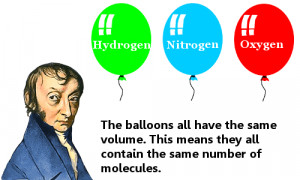Amedeo Avogadro The contributions of the Italian chemist Amedeo Avogadro (1776–1856) relate to the work of two of his contemporaries, Joseph Louis Gay-Lussac and John Dalton. Gay-Lussac’s law of combining volumes (1808) stated that when two gases react, the volumes of the reactants and products—if gases—are in whole number ratios. Avogadro’s law tells about the relationship between the volume of a gas and the number of molecules possessed by it. It was formulated by an Italian scientist Amedeo Avogadro in the year 1811. During a series of experiments conducted by him, he observed that an equal volume of gases contains an equal number of particles. Avogadro’s Law (sometimes referred to as Avogadro’s hypothesis or Avogadro’s principle) is a gas law; it states that under the same pressure and temperature conditions, equal volumes of all gases contain the same number of molecules. The law is named after Amedeo Avogadro who, in 1811, hypothesized that two given samples of an ideal gas.
How is Avogadro's law used in everyday life?
Amedeo Avogadro Law Algebraic Expression

1 Answer
X files for mac. Avogadro's Law states that the volume of a gas is directly proportional to the number of moles of gas.
Here are some examples.
As you blow up a basketball, you are forcing more gas molecules into it. The more molecules, the greater the volume. The basketball inflates.

A flat tire takes up less space than an inflated tire, because it contains less air.

Lungs expand as they fill with air. Exhaling decreases the volume of the lungs.
A balloon filled with helium weighs much less than an identical balloon filled with air. Both balloons contain the same number of molecules. Helium atoms have lower mass than either oxygen molecules or nitrogen molecules in air, so the helium balloon is lighter. Statistics app for mac.
Hope this helps.
Amedeo Avogadro Biography
Related questions
